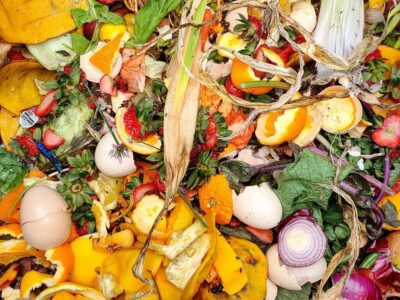
Current Master of Science in Sustainability Management student Alia’a Harun was drawn to the program because of its interdisciplinary approach towards a pragmatic implementation of sustainability and believes the program has helped her communicate and think about environmental challenges in a more critical and holistic way. Alia’a has a background in ecology and wants to apply her knowledge to protect the natural environment and the services it provides.
1. What drew you to the Master of Science in Sustainability Management?
The program’s interdisciplinary approach towards a pragmatic implementation of sustainability. The program is unique in the sense that it makes the financial and economic argument for sustainability practices. With a background in ecology, I wanted the ability to apply hard value onto the natural environment and its services.
2. What inspired you to work in sustainability?
I spent my years growing up volunteering at wildlife rehabilitation centers, caring for displaced wild elephants, sun-bears, hornbills, primates, etc. Through these volunteering efforts, I learned at an impressionable age that humans live recklessly, and pay the price by losing some of the most precious resources. My attachment to the wildlife created an idealist who wanted to work to preserve their space in the natural environment. Eventually, walking down that path led me to sustainability.
3. What do you intend to do professionally once you achieve your degree?
I intend to work within an entity that focuses on ecosystem-based disaster risk reduction or natural infrastructure development. I have always been enthralled by nature’s capacity to absorb and redistribute energy fluctuations—I think that humans are able to be more resilient by learning from the natural environment, and utilizing it as a component in disaster risk reduction, rather than eliminating it.
4. What do you think is the most important sustainability challenge?
I can’t say one challenge is more important than the other, since everything is so interconnected. However, a key challenge would be making sustainability an actual lifestyle and philosophy that people are attracted to, rather than just a fancy buzzword on reports and ads. Do we need more education? Maybe. But even those educated with the science of sustainability are not necessarily practicing it. A sustainable lifestyle is a responsibility, and is difficult because we are very fixed in our tracks and it will require more persuasion to adopt a more responsible lifestyle.
5. What skills and tools have you acquired through the program so far?
The program provided me with the ability to communicate and think about environmental challenges in a more critical and holistic way. Coming from a background of ecology, personally, it’s very tempting to have a purist view on what solutions are needed to mitigate the issues we have at hand. However, the program’s diversified curriculum provided me with the much needed knowledge to “unpack” the issues, and view it through different perspectives.
6. Beyond the classroom, what extracurricular sustainability related have you engaged in with your fellow sustainability management students?
As a full-time student, and a student worker at Columbia, I am able to access and learn from many great workshops and conferences sponsored/co-hosted by the university. Apart from that, I volunteer on a regular basis with the Student Conservation Association and The Battery Conservancy on urban environmental conservation and restoration efforts.
7. What is your favorite class so far and why?
Disaster Risk Management with Klaus Hans Jacob. Dr. Jacob‘s wealth of knowledge and experiences coupled with his enthusiasm in teaching makes for a rewarding learning experience. I went into the course with (barely) a surface level knowledge of disasters, and came out with the ability to converse fluently on the science, politics and economics of disasters and the variety of ways that society manages its risks.
8. What tips do you have for your fellow students who are looking for a job in sustainability?
The same ones given to me when I started the program (but did not quite work on it until the latter half of the program)—network with your peers. They are your best reservoir of information and they are always ready to help. Don’t be shy to put yourself out there, and carve out your niche.
9. How has collaborating with your fellow students in projects in the classroom benefited you professionally and personally?
My peers in this program are way beyond outstanding—they are all of various professional backgrounds and expertise, which creates a beautifully diversified and intellectual landscape for in and out of classroom exchanges. As a student, I am learning something new and important every day.
The M.S. in Sustainability Management, co-sponsored by the Earth Institute and Columbia’s School of Professional Studies, trains students to tackle complex and pressing environmental and managerial challenges. The program requires the successful completion of 36 credit points. Those credit points are divided among five comprehensive content areas: integrative sustainability management, economics and quantitative analysis, the physical dimensions of sustainability, the public policy environment of sustainability management, and general and financial management. Visit our website to learn more.



